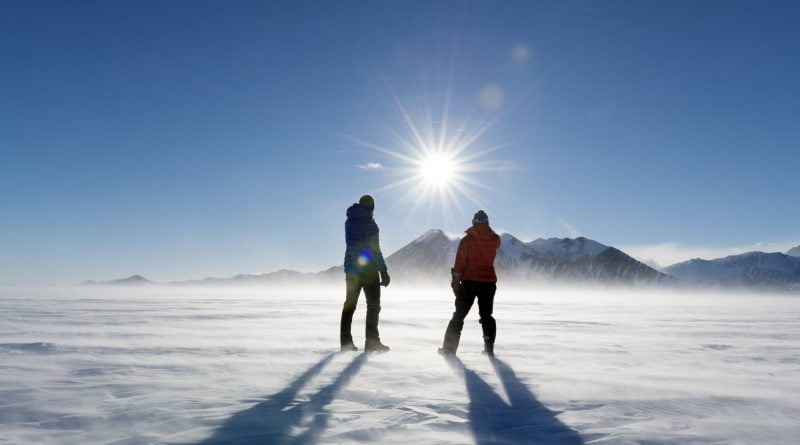A total solar eclipse over Antarctica
[ad_1]
The sky during the eclipse
Both the Sun and Moon will lie in the southern part of the constellation Ophiuchus the Serpent-bearer. The Sun is in front of its stars from Nov. 29 through Dec. 17. At the moment of greatest eclipse, the Sun’s right ascension will be 16h43m32s and its declination will be –22°16’29”.
During the eclipse, the planet nearest to the Sun will be Mercury. The innermost planet, shining at magnitude –1.1, will lie 3° east-southeast of our daytime star. Sharp-eyed observers may spot it just outside the solar corona without optical aid. If you use binoculars during totality, they’ll guarantee that you’ll see Mercury. (Remember to use filters on your binoculars at any time other than totality.)
Venus, normally easy to spot during totality of any solar eclipse, may be invisible from its location 40° east of the Sun. That’s because the Sun’s maximum altitude during the eclipse is only 17°.
The shadow’s journey
The South Orkney Islands, which lie in the Southern Ocean some 375 miles (600 km) northeast of the Antarctic Peninsula, are where the Moon’s umbra first touches land. This small group is claimed by both Argentina and Great Britain but administered under the Antarctic Treaty System.
The western limit of the umbral path cuts through Coronation Island, the largest of the group, creating a partial eclipse for the western one-third of that small landmass. Laurie Island, which lies farthest east, fares better. The duration of totality on its western edge will be 57 seconds and will increase to 1 minute 7 seconds at its eastern coastline.
From there, the path treks southward more than 750 miles (1,200 km) to the northern coast of Antarctica. Just 44 miles (70 km) before it gets there, maximum eclipse occurs. Satellite and climate data show prospects for seeing the event improve the closer one gets to Antarctica, as December cloud cover is predicted at nearly 100 percent over the ocean path.
By far the best weather will be for those who can position themselves on the ice cap itself. Unfortunately, there is only one seasonal viewing site for explorers to use. Operated by Antarctic Logistics & Expeditions, this site is at Union Glacier, about 15 miles (25 km) inside the zone of totality. At the camp, the eclipsed Sun will be about 14° high and totality will last only 47 seconds, but weather prospects are better there than at any other easily approachable site along the path.
The eclipse comes during what should be nighttime hours at Union Glacier. But less than three weeks from the December solstice at the camp’s latitude of 79° South, daylight stretches 24 hours. Be careful to set up where the mountains surrounding your campsite won’t block your view.
[ad_2]
Original Post


1,751 thoughts on “A total solar eclipse over Antarctica”